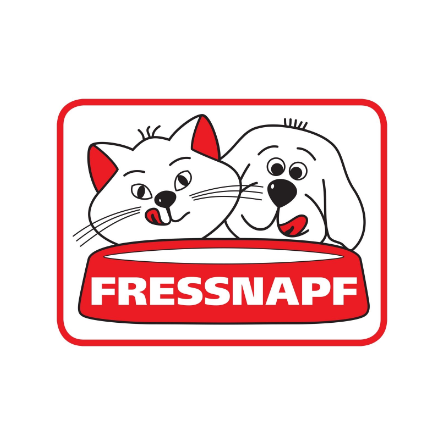Recruitment: Definition – What is behind the term?
The relevance of recruitment for companies is immense, because employees are the foundation on which business success is built. They are the bearers of knowledge, skills and competencies that make a decisive contribution to a company’s value creation and innovation.
In a dynamic economic environment characterized by rapid technological developments and global competition, successful recruitment is of enormous importance. Companies must be able to react quickly to changes and supplement or adapt their teams in line with current requirements.
By definition, recruitment plays a key role here, as it ensures that companies have the necessary human resources at all times.
What is recruitment? Definition
Recruitment is a central process within human resources management that describes the entirety of activities aimed at attracting suitable personnel to a company. It includes both the search for and approaching of potential candidates as well as the selection and hiring of new employees.
The aim is to identify the right talent, attract them to the company and retain them in the long term in order to support the company’s goals and strengthen its competitiveness.
In addition, recruitment has a fundamental influence on organizational development. organizational development. Effective recruitment helps to shape and develop the corporate culture.
New employees not only bring their individual skills, but also new perspectives and ideas that can drive innovation. By integrating talent from different backgrounds, recruitment also promotes diversity within the workforce, which in turn can strengthen a company’s problem-solving ability and creativity.

What recruitment means: types of recruitment
Different types of recruitment can be used depending on the needs and objectives of the company. In the following, we will take a closer look at some of the most common recruitment strategies and look at practical examples of their application.
Internal recruitment
Internal recruitment refers to filling open positions with employees who are already working for the company. This can involve horizontal movements – i.e. position changes at the same hierarchical level – or promotions. A key advantage of internal recruitment is that the employees in question are already familiar with the company, which means that induction periods are significantly shorter.
Example: A medium-sized company would like to fill the position of department head. Instead of launching an external search, it initially offers the position internally. Through internal advertisements and assessments, a long-standing employee was identified whose performance and leadership skills speak in favor of the promotion. The company thus saves resources and at the same time strengthens the Employee retention through promotion opportunities.
External recruitment
External recruitment refers to the recruitment of new employees outside the company. Various channels and methods are used to reach candidates. External recruitment activities can range from job advertisements in trade journals to headhunting for specialized positions.
Example: A technology start-up is looking for an experienced software developer. The company places targeted advertisements on IT-specific job boards. The targeted approach and the offer of a dynamic working environment help to find a suitable candidate who will contribute to the start-up’s innovative strength.
Referral programs
Companies often use their own employees’ networks to recruit new talent. Referral programs reward employees for successfully referring acquaintances, friends or former colleagues who are then hired.
Example: An international consulting firm implements an employee referral program. Employees whose recommendations lead to a successful hire receive a bonus payment. The program not only increases the number of applications, but also the quality of candidates, as employees recommend people who they are convinced are a good fit for the company.
Active Sourcing
Active sourcing is a proactive recruitment strategy in which recruiters actively search for potential candidates and contact them directly. This method is particularly effective for reaching passive candidates who are not actively looking for a job but may be open to a new challenge.
Example: A company in the renewable energy sector is looking for a project manager with specific knowledge of offshore wind farm construction. As this expertise is relatively rare, the company opts for active sourcing. A specialized recruiting team uses Xing and LinkedIn (see “Social Media Recruiting”) to search candidate profiles and specifically approaches experts in this field. This approach attracts a specialist who helps the company to strengthen its market position in this niche area.
Social media recruiting
Recruiting via social networks, known as social media recruiting, has developed rapidly in recent years. By using platforms such as LinkedIn, Facebook or Twitter, companies can reach a large and diverse group of candidates.
What is involved in the recruiting process?
In practice, recruitment can be divided into different phases, with each phase involving specific activities.
The first step is to determine requirements, analyzing exactly which positions need to be filled and what requirements these entail. This is followed by defining the target group and determining the search strategy.
Potential candidates can then be approached via various channels, such as job portals, career fairs or – increasingly important – social networks.
During the selection phase, applications are screened, interviews are conducted and aptitude tests are carried out to filter out the most suitable candidates. Finally, the new employees are hired and integrated into the company.
The importance of successful recruitment
Now you know the definition and importance of recruitment, but we want to help you even further in using this important process to your advantage. At Teamhero, we pride ourselves on offering a software solution that simplifies and optimizes the entire recruitment process. Our integrated applicant management system allows you to create and publish job ads with just a few clicks.
You can evaluate applications efficiently and thus make better decisions for future recruitment. With one click, applicants can be turned into employees and transferred to the employee database so that they are immediately available for scheduling.
Our system not only supports you in managing interview appointments, but also allows you to customize the application process. With Teamhero, you have a complete overview of your recruitment process at all times. Among other things, the software is designed to facilitate your daily personnel planning, optimize project management and increase the quality and effectiveness of your planning.
Try out Teamhero to see for yourself how your recruitment processes can be simplified and made more efficient.
Disclaimer
Please note that the texts on this website and the related contributions are provided for general informational purposes only and do not constitute tax or legal advice in the proper sense. For individual cases, we always recommend seeking specific legal advice tailored to the circumstances of the situation. The information is provided to the best of our knowledge and belief, without any guarantee of accuracy, completeness, or validity.

























